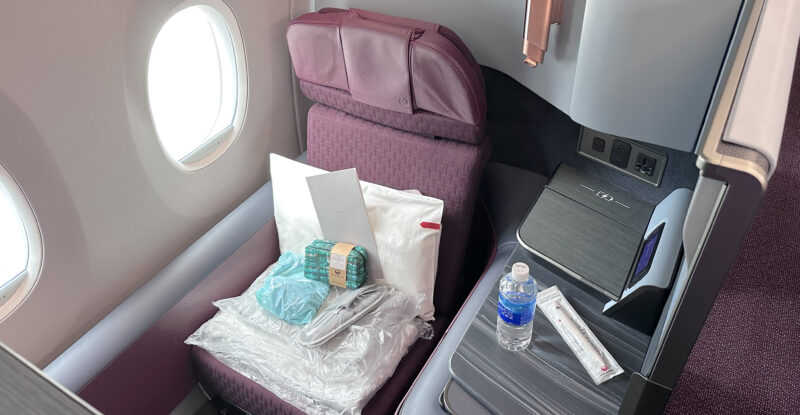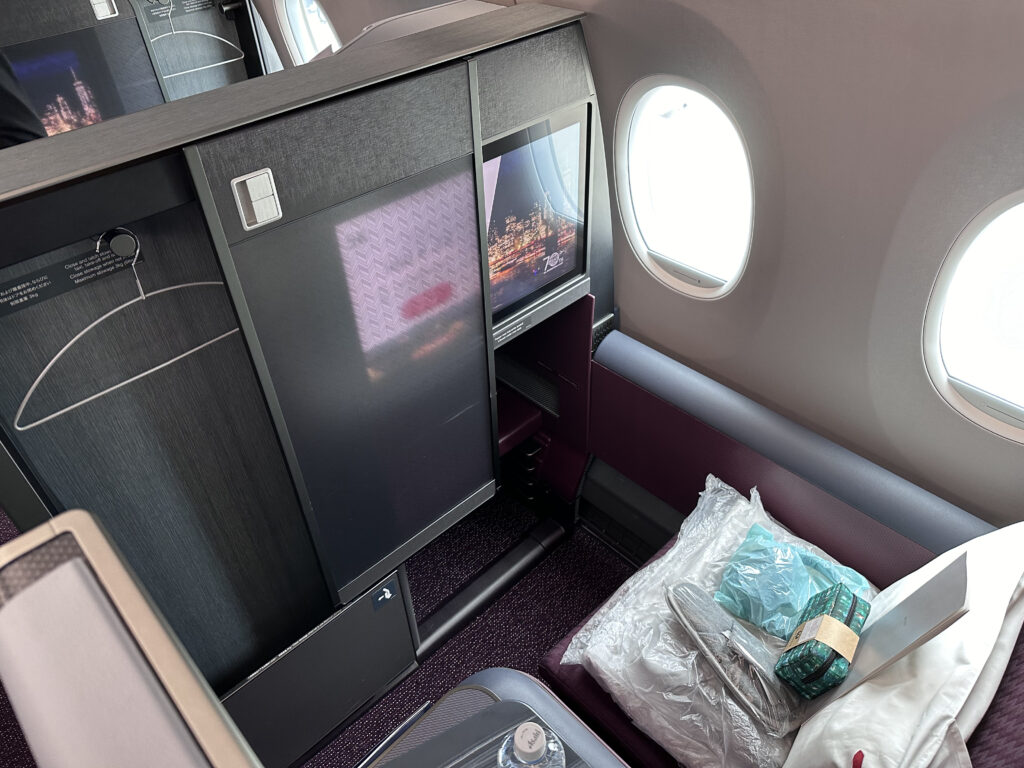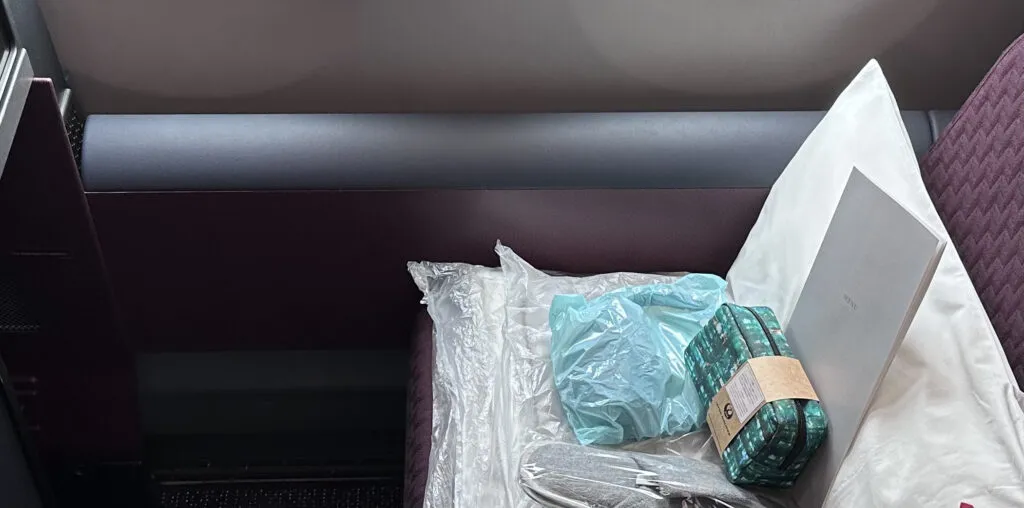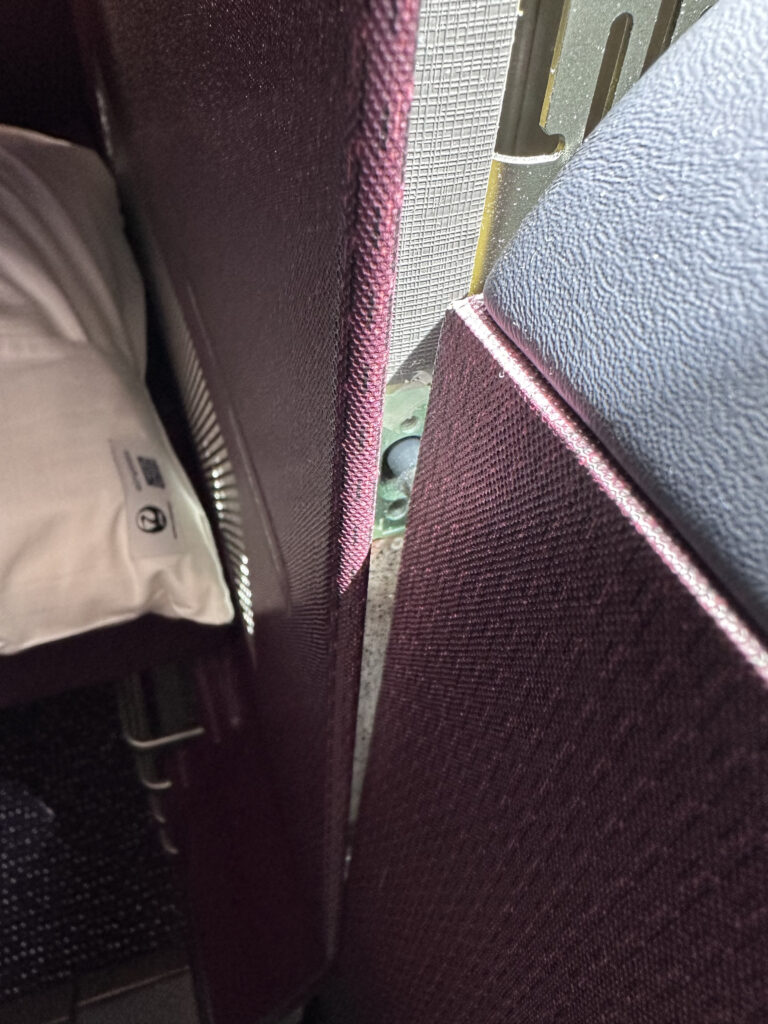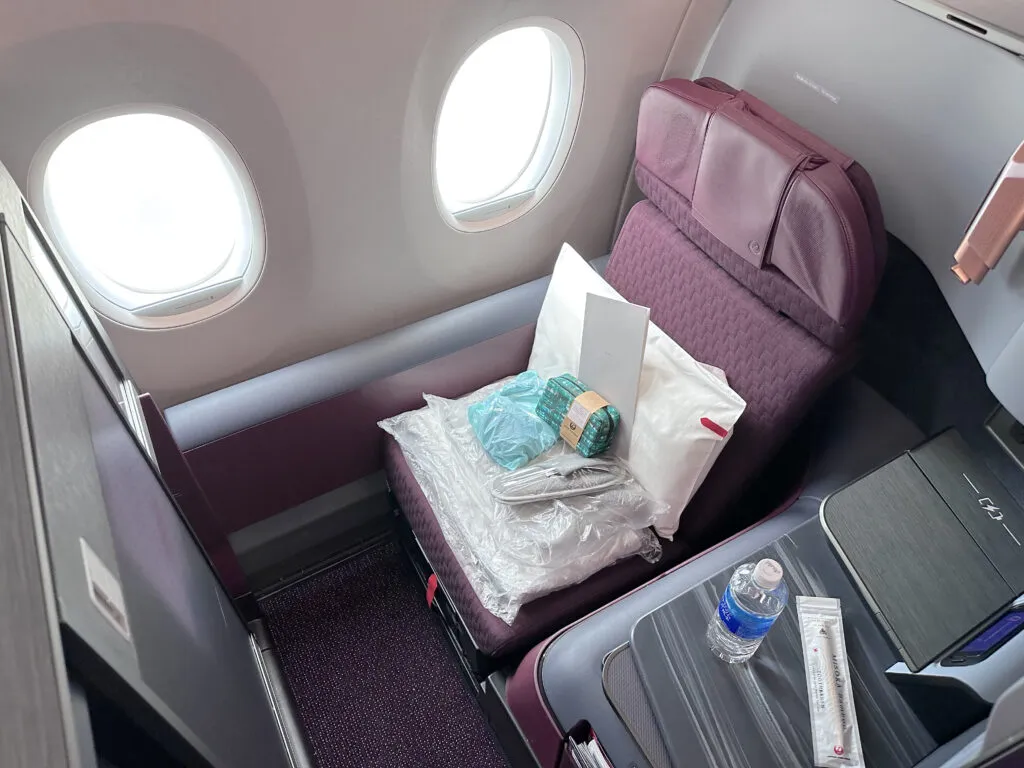 As launch customer for the Unity seat from Safran Seats GB, Japan Airlines continues to enjoy substantial attention as it awaits its next Airbus A350-1000 deliveries, the carrier’s new international flagship aircraft — not least since other airlines including Qantas and Air India have also ordered the seat, which looks set to be a stalwart of the next generation of business suites. So it was with much anticipation that this Runway Girl Network journalist boarded JAL’s second A350-1000 in Tokyo (as, full disclosure, a guest of the airline) for the 13-hour flight to New York.
As launch customer for the Unity seat from Safran Seats GB, Japan Airlines continues to enjoy substantial attention as it awaits its next Airbus A350-1000 deliveries, the carrier’s new international flagship aircraft — not least since other airlines including Qantas and Air India have also ordered the seat, which looks set to be a stalwart of the next generation of business suites. So it was with much anticipation that this Runway Girl Network journalist boarded JAL’s second A350-1000 in Tokyo (as, full disclosure, a guest of the airline) for the 13-hour flight to New York.
On boarding, the cabin was even more impressive than it was at the reveal event in Toulouse last December, thanks to the soft mood lighting on a cloudy April morning in Tokyo. The calm, cosy atmosphere and JAL’s welcoming and helpful flight attendants were a great start to the flight, guiding me to my suite and showing me how the in-seat wardrobe worked before letting me get settled in.
Popping my rollaboard in the overhead bin, I noted that the space here was at quite the premium, especially with no centre bins, and with the (excellent) Airweave mattresses that must be stowed for takeoff and landing. On the seat, Mount Blankets — of items including duvet, lap blanket, slippers, sleepwear, headphones, amenity kit, menu and pillow, all of which I needed to stow — took up the upper part of the footwell and my laptop bag the lower.
Indeed, I ended up putting most of Mount Blankets in the overhead shortly after takeoff to put my socked feet up. Smaller storage, though, at side table and shoulder level, was certainly sufficient to empty my pockets and for the amenity kit.
The soft product and service on this flight were absolutely excellent, and are a continuation of the concept that JAL uses on its other longhaul business class routes, so I will skip past the excellent meal, superb wine list and superlative on-demand dining menu to concentrate on the suite itself.
The suite is very spacious for a business class product, and the high doors make it very private indeed — much more so than many competing products. The one quirk of this, of course, is the interaction with crew, which JAL’s flight attendants still seemed to be getting used to.
It’s less awkward to see a flight attendant walking through an open cabin from a distance than it is for a head to suddenly pop up over the top of your suite door with the next course of your meal, a top-up for your wine glass, or to see if they can clear your dishes. This is a common issue with high-doored suites, and I’m not entirely certain how to solve it.
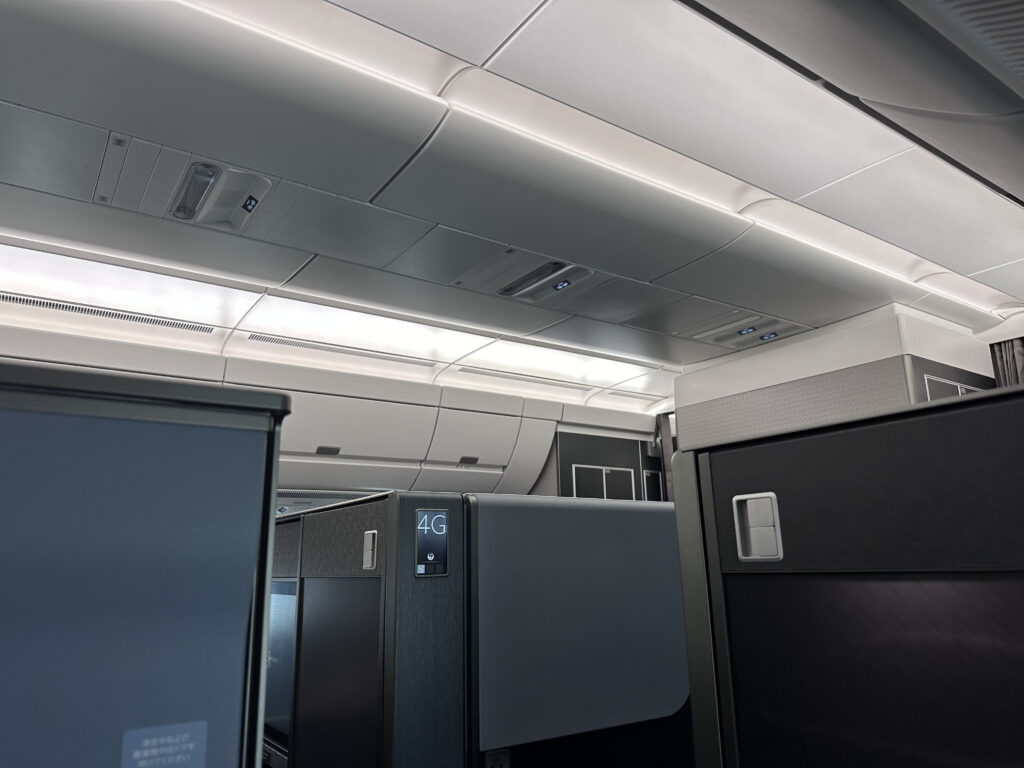
The high walls of the suite mean that crew suddenly appear into view peering over the door. It’s a little odd, still. Image: John Walton
In bed more, Unity really shines. The large footwell is quite literally a dream, enabling even this larger-hoofed passenger to turn over easily, with space at shoulders and knees too. The padding plus the Airweave mattress was truly excellent, and I got a great sleep onboard.
In dining and relaxation mode, however, I was surprised to find it performing less well than I’d expected. Without a legrest, there’s no Z-bed option, which I missed on this long flight compared with my inbound Collins Apex 787 flight.
The movement of the suite’s functions also left something to be desired. While the feature translucent wardrobe door worked well, the side storage lockers were quite industrial and clackety in the way they opened and closed, while the table mechanism was a little rough.
(A Japan Airlines spokesperson tells RGN that “as minor engineering improvements that JAL/Safran GB team are working on, we are considering changing forms of plastic parts that cover meal tables so that we can achieve smoother movement.”)
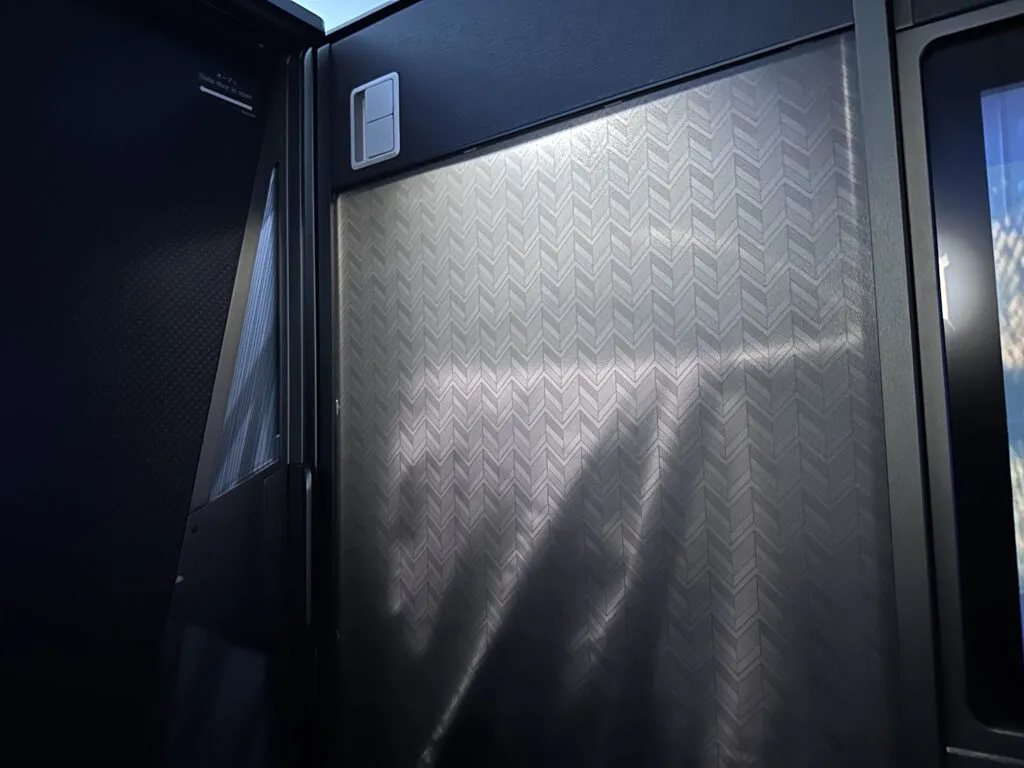
The translucent door materials on the wardrobe and part of the suite door gave a feeling of extra space. Image: John Walton
In service for just three months, the cabin looked fresh and new, although there was a surprising amount of scuffing and wear in a few high-touch spots already, especially in and around the very narrow aisles, which were some of the tightest I’ve experienced.
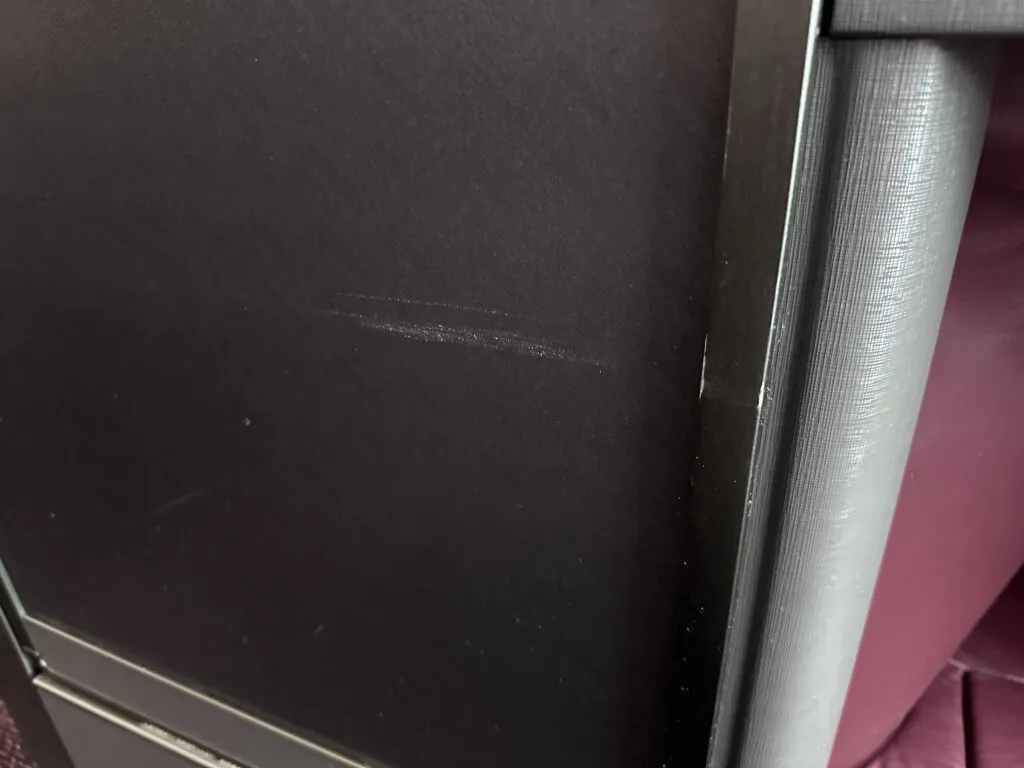
Even after just a few months in service, there was visible wear in places, like here on the wardrobe door. Image: John Walton
Structurally, there were a few areas of the seat that, on inspection, seemed to stick out.
Production quality was decent, if not exemplary, to this passenger experience journalist’s gimlet eye. (In fairness, eyes were peeled for snags, given the delays to the aircraft and Safran-formerly-Zodiac’s prior history with production quality.)
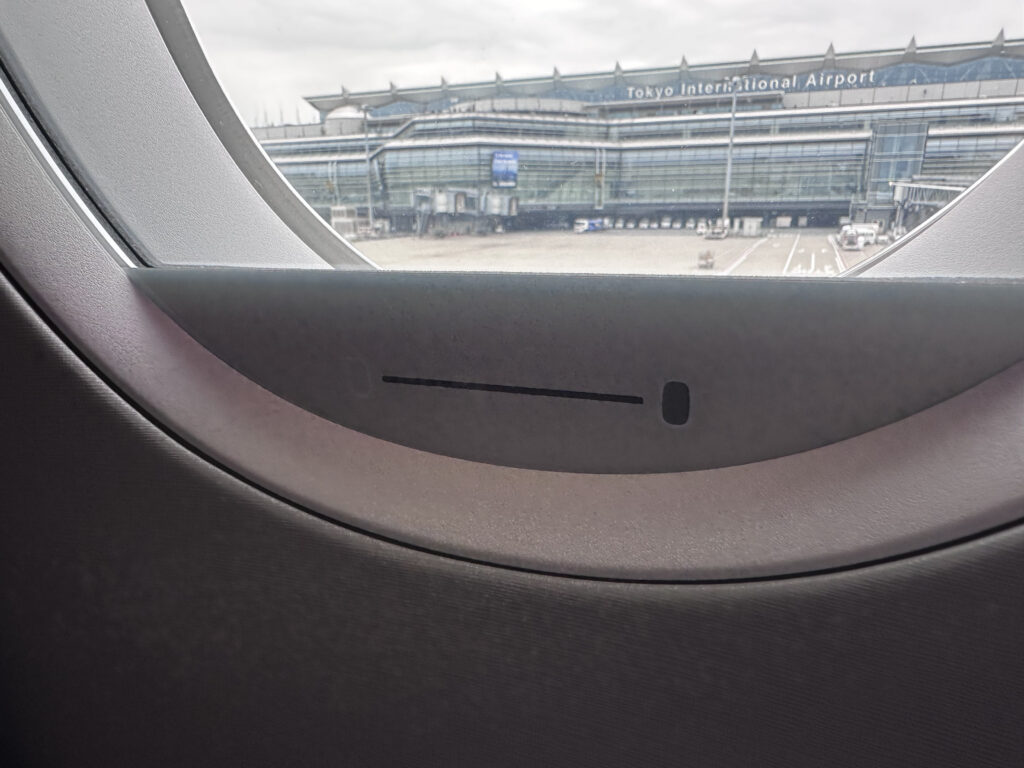
This was the first time I’d used the new Airbus electronic dimming, which worked really well. Image: John Walton
Beyond a few small things like the red-with-blue-leather-trim horizontal cap element above the IFE being raised above flush, the odd long element that extended the window-side armrest along the sidewall was confusing in the way it interfaced with the tesselating seats.
There’s also an odd bit of vertical trim element sticking a good inch or so (a couple of centimetres) out of the footwell, and then what looked to be an empty void-covering of red-trimmed composite with a rounded cap of blue leather that seemed to have nothing underneath or behind it.
This void-covering didn’t seem especially well attached here or in another suite I ducked into to double-check; it was a good four or five inches thick at a fairly key pinch point where I might have liked to spread out or curl up. It’ll be interesting to see whether and how these odd elements change in subsequent Unity implementations.
The at-seat technology was a mixed bag. Easily accessible AC, USB-A and USB-C power sockets were a plus, but the wireless charging was too sensitive to being within a hair’s breadth of the exact spot to rely on, and frankly too slow to bother using.
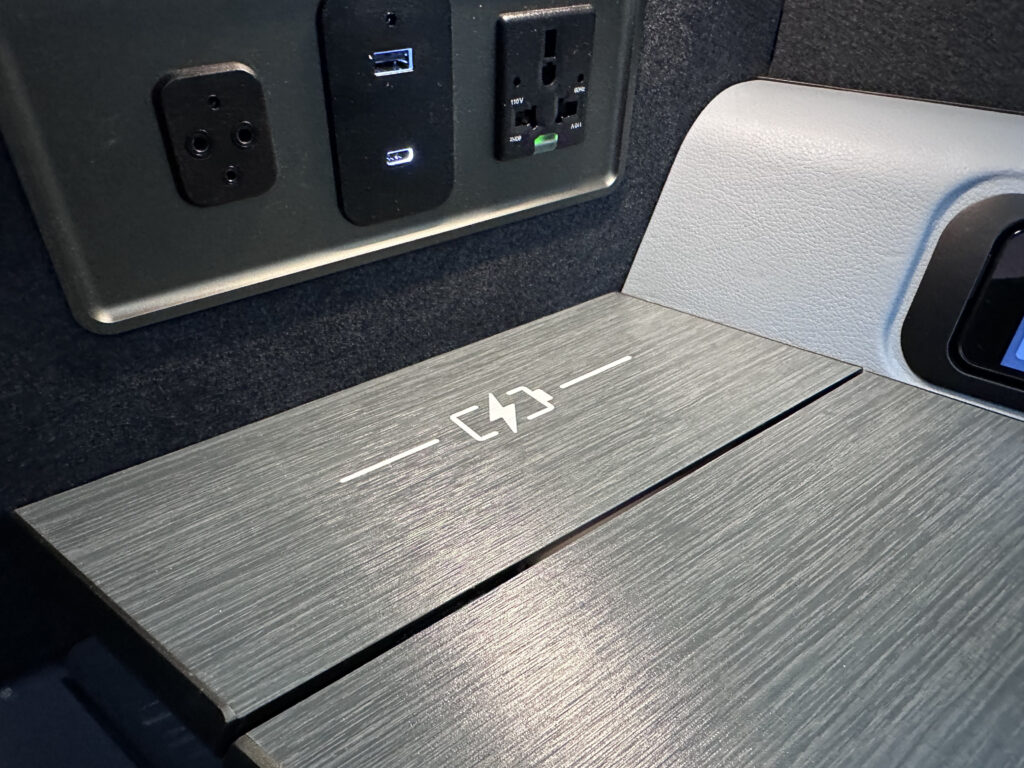
Great location for the power sockets, but neither my iPhone nor AirPods got on with the wireless charging. Image: John Walton
The Panasonic IFE was impressive in screen size on sitting down and when in map mode, but dramatically less so in terms of content picture quality, with even the latest Hollywood blockbusters seemingly set at a blurry and artifact-heavy resolution.
It was also curious that the IFE cataloguing system was displaying several copies of many of the big movies — presumably there was a different audio/subtitle selection for each or something, but I’m not sure why this would need to be hardcoded into the file, or indeed why some information about this couldn’t be shown at selection point on such an advanced system.

It seems odd that a modern IFE system can’t display any differentiation between these three versions of the same movie, or indeed that three versions need to be loaded. Image: John Walton
Safran’s Euphony system worked, but I’m not sure this is needed for anything but the most basic of background noise content that you want to watch just to be watching something. I’ll delve deeper into this in a separate feature here on RGN.
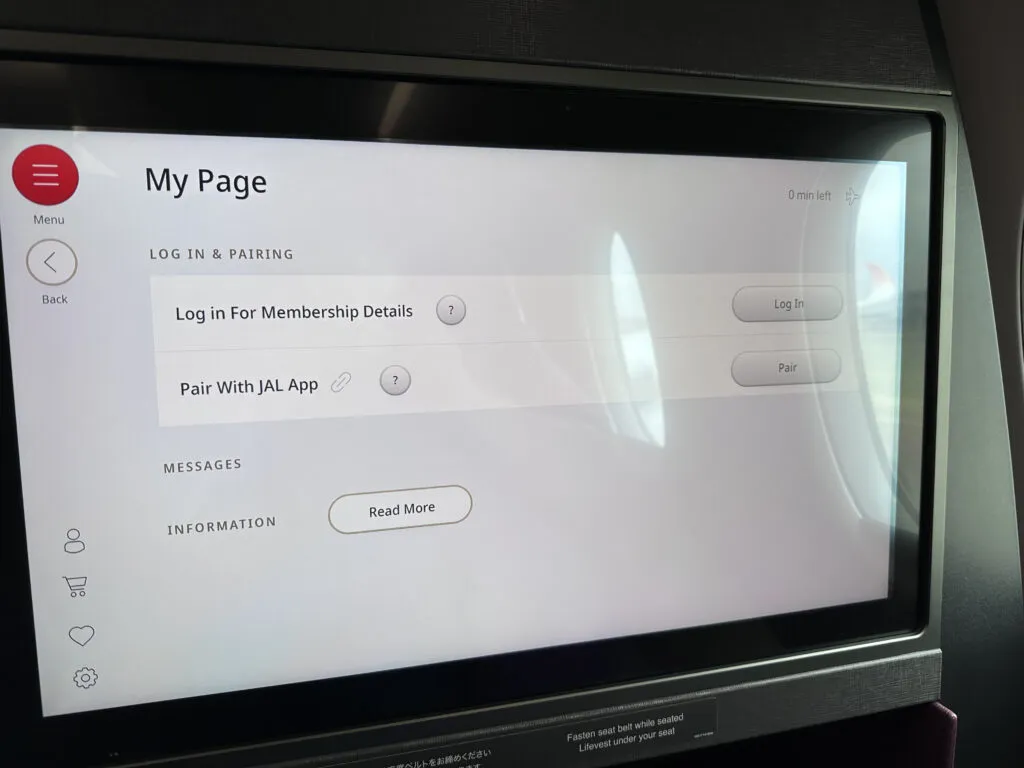
App pairing will in theory be available at some point. Image: John Walton
Inflight connectivity ($20 for the flight) was very middling, with decent speeds for the Panasonic service over Asia, but dropouts and login issues widespread over the Pacific and US. On balance, If I weren’t a journalist reviewing it, I’d probably have asked for a refund.
The last surprise was a less pleasant one: the utterly minuscule bathrooms in business class.
All three were tiny — and I’m talking 737 mini-lav tiny — to the extent that changing into my pyjamas was an exercise in contortion.
On any airline less scrupulous about keeping lavatories spotless, this would have been quite the unpleasant experience.
All in all, though, my already high expectations of JAL’s business class experience were surpassed by how spacious and private the Unity seat felt.
It’s a step-change for JAL business class — and for the experience of business class suites as a whole.
John Walton was a guest of the airline, but all views are, as ever, his own.
Related Articles
- Safran teases Unity Elite front-row first-class/business-plus suites
- Collaboration brings Boltaron translucents to life on JAL A350
- JAL’s new flagship A350-1000 astounds with aesthetics and space
- Testing Safran’s headrest-free sound for premium seats
- JAL first class provides a masterclass in premium PaxEx
- Safran’s Unity adds premium stagger to its business lineup
- Press Release: Safran reveals new VUE and Unity business class seats
Featured image credited to John Walton




